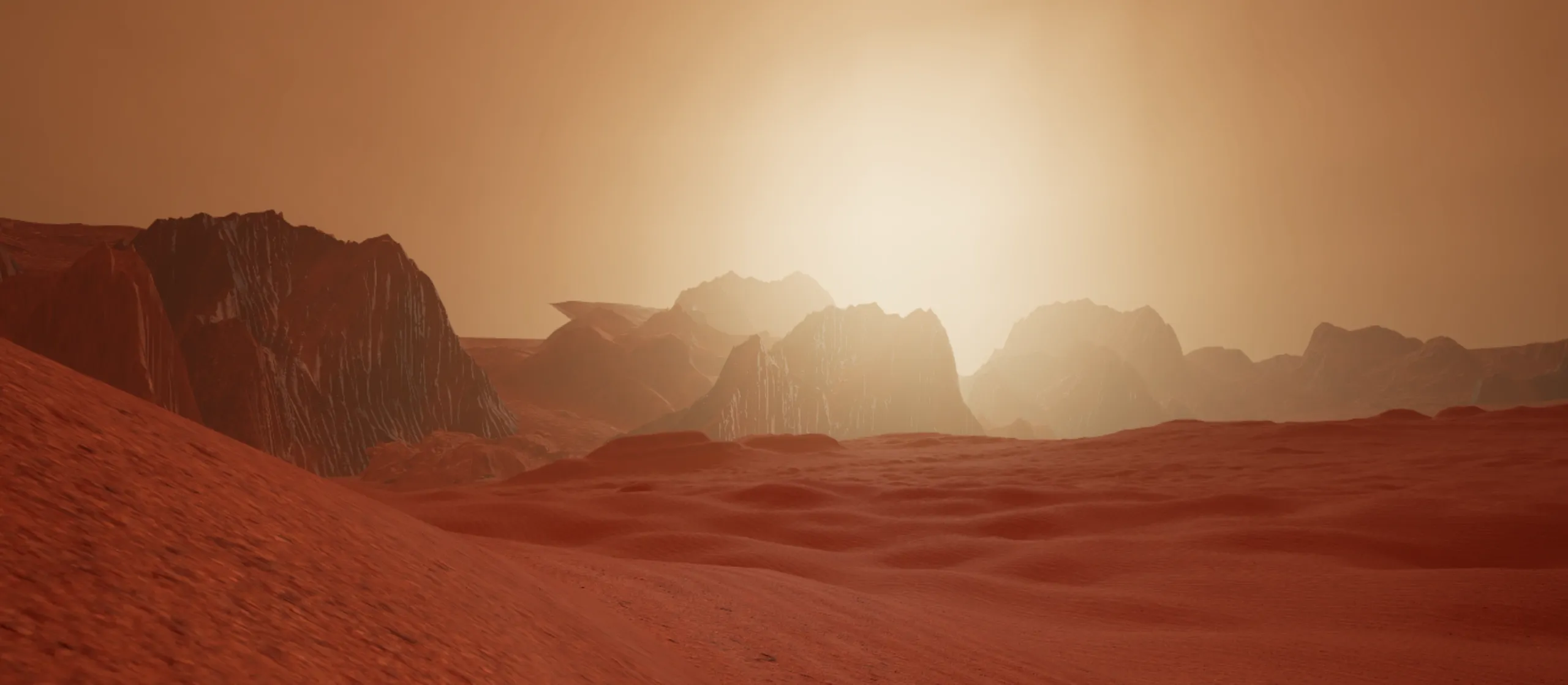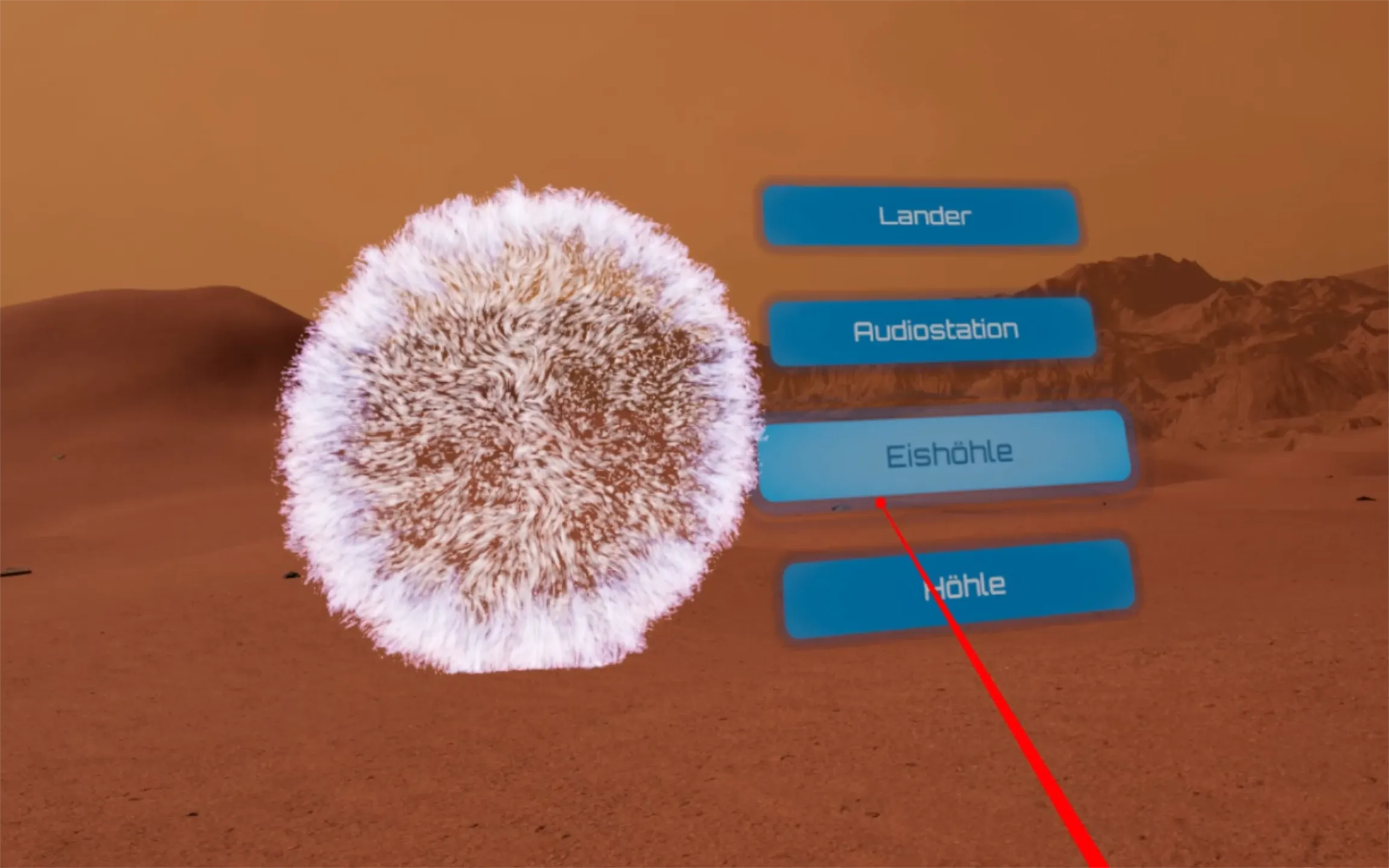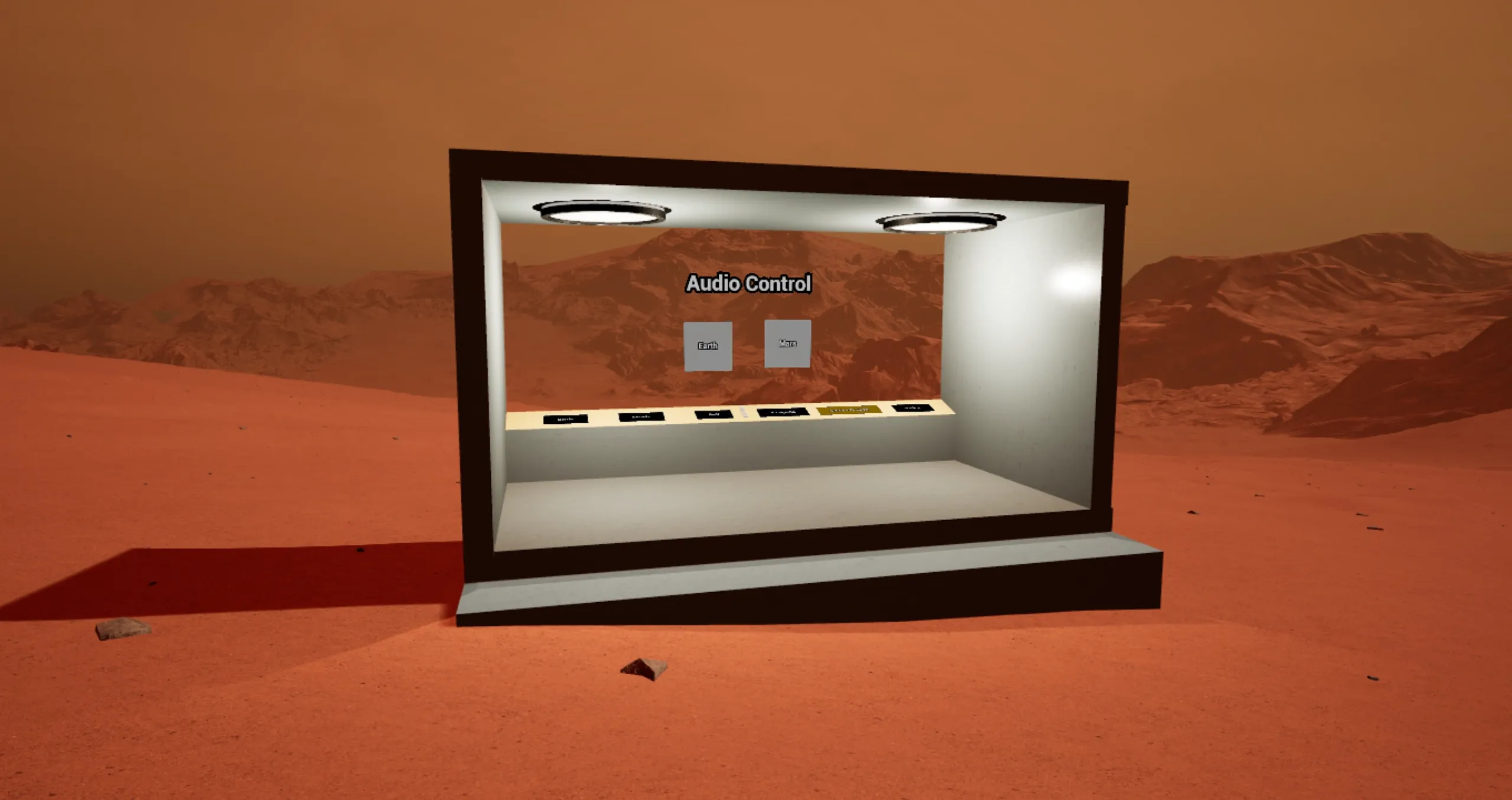
MARVEL
Mars Audio-Realistic Virtual Exploration League
About
MARVEL (Mars Audio-Realistic Virtual Exploration League) is an innovative virtual reality project developed at the University of Bremen that creates an immersive multi-user platform for space mission planning and collaboration. Built on Unreal Engine 5.5, MARVEL provides a realistic virtual testbed for Mars exploration, featuring detailed terrain modeling, vehicle simulations, and spatial audio experiences. The project connects to real scientific research funded by the German Space Agency (DLR), specifically supporting the VaMEx (Valles Marineris Explorer) initiative - a planned mission to investigate Mars' Valles Marineris canyon system using autonomous robot swarms. MARVEL serves as both a research tool and collaborative platform, enabling distributed teams of space researchers to discuss, plan, and simulate future Mars missions in a shared virtual environment.
Key features include photorealistic Mars terrain rendering, interactive vehicle models, multi-user collaboration capabilities, and advanced spatial audio simulation that replicates sound propagation on Mars. The project bridges the gap between cutting-edge VR technology and practical space mission planning, offering researchers a tool for exploring and understanding the challenges of Mars exploration before actual missions take place.
MARVEL represents the convergence of virtual reality, space science, and collaborative technology, providing a unique platform where the future of Mars exploration can be experienced and planned today.
Download Presentation as .pptx
VaMEx
The VaMEx project, short for Valles Marineris Explorer, searches for a swarm-based exploration approach for future mars missions. For this goal, several autonomous drone units work together in the same network, consisting of rovers, crawlers and unmanned aerial vehicles. The VaMEx-VTB is a subproject of the University of Bremen with the goal to firstly provide a test framework for swarm-based exploration systems and secondly contain tools for evaluation. To achieve this, a communication framework between Unreal Engine 5 and ROS has been implemented, which will also be used in this project. More information can be found here.


Features
MARVEL offers a comprehensive suite of features designed to create an authentic Mars exploration experience while facilitating collaborative space mission planning. The platform combines cutting-edge virtual reality technology with scientific accuracy, providing researchers and educators with powerful tools for understanding and preparing for future Mars missions. Each feature has been carefully developed to balance realism with usability, ensuring both educational value and practical application for space exploration planning.
- Mars Surface Missions: Interactive geological exploration with sample collection and obstacle removal tasks that simulate real Mars rover operations
- Collaborative Teleportation: Group teleportation system allowing teams to explore the Martian terrain together
- Spatial Audio Simulation: Advanced audio station that reproduce sound propagation in Mars thin atmosphere, and allows to compare the sounds to Earth atmosphere
- NPC: Interactive virtual astronaut and mission specialists providing guidance und information
- VR Communication System: Real-time chat functionality enabling seamless collaboration between team members in the virtual environment
- Minimap: Allows to navigate through the map







Paper
Mars Audio Perception Study
The MARVEL project includes a comprehensive research study investigating how humans perceive sound in Martian atmospheric conditions. We did a study to determine whether the unique acoustic properties of Mars - particularly acoustic dispersion - are noticeable to the human ear in virtual reality environments.
Study Overview
Using Virtual Reality technology, participants estimated distances of sound sources under both Earth and Mars atmospheric conditions. The study specifically examined acoustic dispersion, a phenomenon where different sound frequencies travel at different speeds on Mars due to its CO2-dominated, low-pressure atmosphere.
Key Findings
The research revealed that acoustic dispersion on Mars is essentially imperceptible to humans. Statistical analysis showed no significant differences in distance estimation accuracy between sounds with and without dispersion effects. This finding validates our design decision to focus on other Mars acoustic properties that are more perceptually relevant.
Scientific Impact
These results provide insights for future Mars missions planning and VR development. The study confirms that while acoustic dispersion is a measurable physical phenomenon on Mars, it can be considered negligible for human perception in practical applications. Other Mars acoustic effects - such as reduced volume, frequency-dependent dampening, and altered sound propagation - prove far more important for creating authentic simulations.
Methodology
The study used statistical analysis including T-tests and correlation analysis to examine participant responses across various distances and sound types. Participants used Meta Quest 3 S headsets with professional audio equipment to ensure accurate sound reproduction in the virtual Mars environment.
Download Paper as PDF

Team
Adham Abo Albawakir
Informatik
Hava Arsanova
Digitale Medien
Jule Behler
Digitale Medien
Vanessa Broege Salazar
Digitale Medien
Nick Dieckmann
Digitale Medien
Emely Grundmanns
Digitale Medien
Umut Gülbas
Informatik
Laurin Hofbauer
Digitale Medien
Cem Igci
Informatik
Sara Kraus
Digitale Medien
Marie Lehmann
Digitale Medien
Luca Osmers
Informatik
Anna Nele Puntke
Digitale Medien
Herman Reckeweg
Digitale Medien
Finn Thorwarth
Informatik
